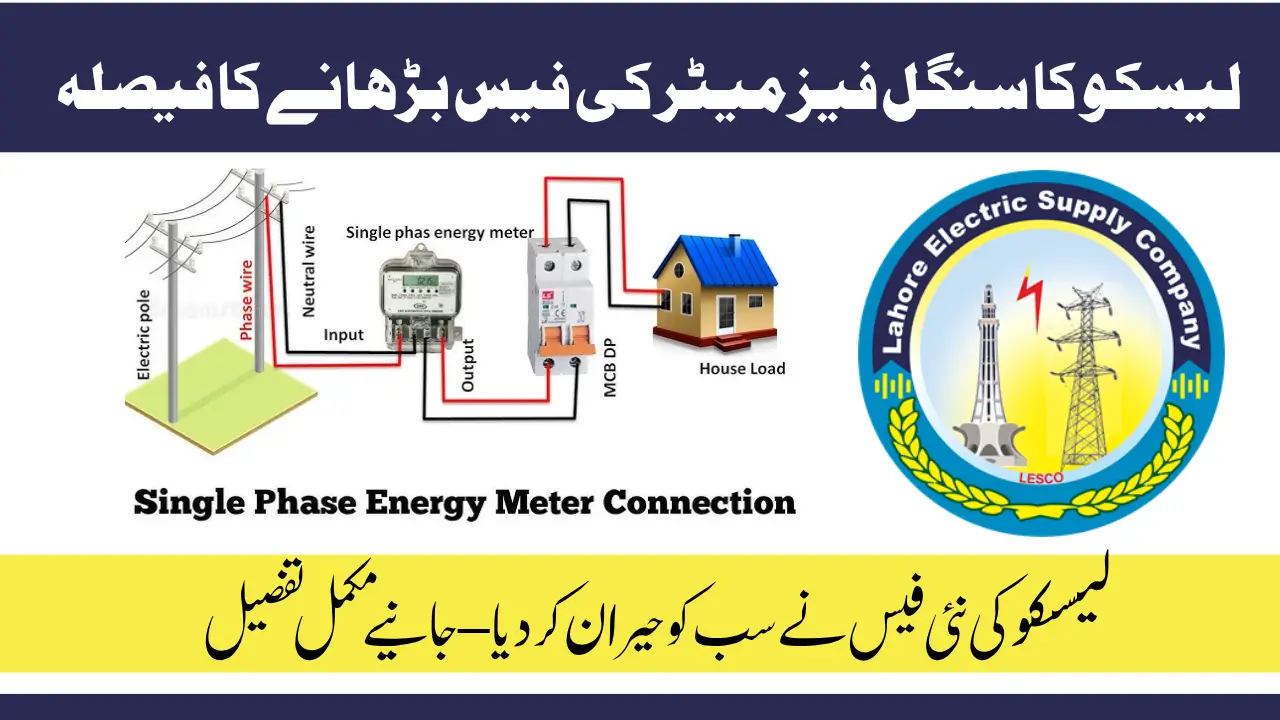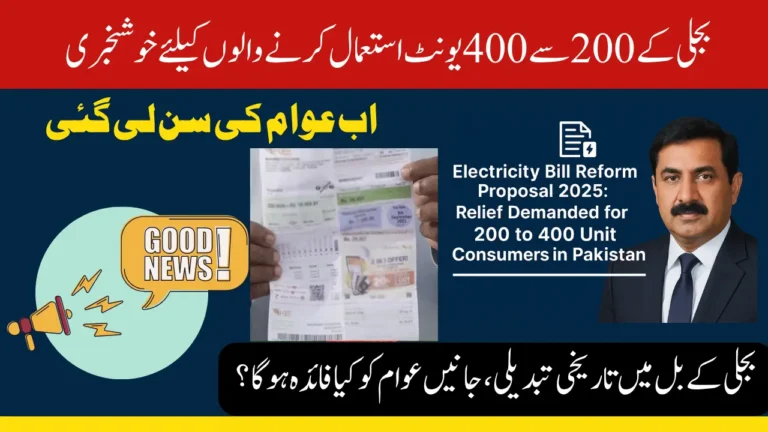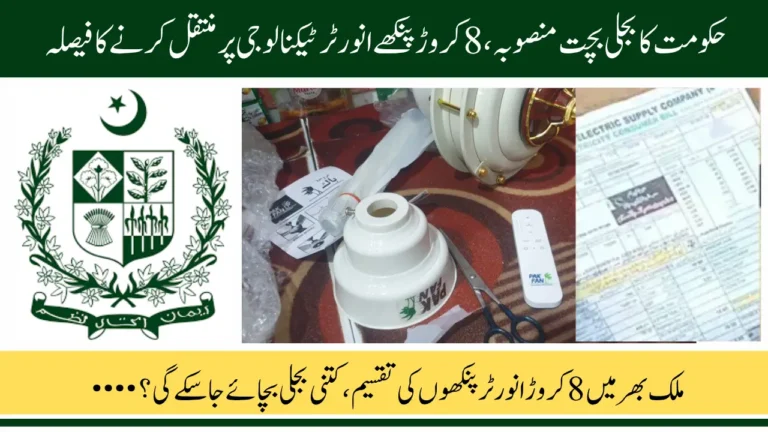
LESCO Increases Fee for Single Phase Meter Connection
LESCO Increases Fee for Single Phase Meter Connection: Lahore Electric Supply Company (LESCO) has decided to increase the single-phase meter fee by a surprising amount, which will directly affect the common consumers. Earlier, the demand notice for a single-phase meter was only Rs 10,000, but now it is likely to increase to Rs 21,000. If you want to get a new connection, pay attention immediately because this increase can seriously affect your budget.

Under this new decision, a complete ban has been imposed on static meters, and now only modern AMI single-phase meters will be installed, which will cost up to Rs 16,000. As per the orders of the Ministry of Energy, LESCO will purchase only AMI meters in the current financial year, due to which the consumers will have to bear additional expenses. Read this article to know the complete details so that you do not face any surprises in the upcoming bill.
People Also Read: Biometric Verification Now Mandatory for Cash Transactions – Are Your Accounts Safe?
LESCO Single Phase Meter Fee – Old vs New (2025 Update)
| Category | Old Fee (PKR) | New Fee (PKR) | Difference |
| Standard Single Phase Meter | 10,000 | 21,000 (expected) | +11,000 |
| Static Single Phase Meter | ~5,000 | (Banned) | Discontinued |
| AMI Single Phase Meter | N/A | 16,000 | New Addition |
| 3-Phase Meter (for comparison) | 20,000 – 25,000 | 70,000 – 75,000 | +50,000 |
Note: AMI meters are now mandatory under the Power Division’s new policy. Static meters are no longer allowed.
New Fee Structure for Single Phase Meters
LESCO has decided to revise the demand notice cost for single-phase electricity connections. Previously, the fee was around Rs. 10,000, but under the new policy, it is expected to rise up to Rs. 21,000 marking an increase of Rs. 11,000.
This change will apply for Green E-Taxi Program 2025 to both standard and AMI (Advanced Metering Infrastructure) meters. The standard single-phase meter will now cost Rs. 5,000, while AMI single-phase meters will cost around Rs. 16,000. Due to the AMI upgrade, consumers will have to bear additional charges.
People Also Read: Prime Minister Youth Laptop Scheme 2025: 100,000 Laptops to Be Distributed by End of July
Why the Demand Notice Price Is Increasing
According to official sources, this price hike is due to a new policy by the Power Division of Pakistan, which has banned the installation of static meters across all power distribution companies. In compliance, LESCO will begin purchasing AMI single-phase meters during the current fiscal year.
Since AMI meters are more advanced and costly than traditional meters, LESCO is left with no option but to increase the price of the demand notice to balance procurement costs.
Previous Increases in Meter Costs
It is important to note that this is not the first time LESCO has raised meter-related fees. Earlier, the demand notice for three-phase meters was increased by as much as Rs. 50,000, sparking concern among commercial and industrial users.
People Also Read:
What Consumers Should Expect
- Single-phase meter demand notice may now cost up to Rs. 21,000.
- AMI technology will become standard for new meter connections.
- Additional charges will burden common households already struggling with electricity bills.
Consumers applying for new connections should prepare for these new rates and keep a close eye on further policy updates from LESCO and the Power Division.
Conclusion
This decision is part of the government’s broader strategy to digitize electricity consumption and improve transparency, but the increased costs are likely to raise concerns among lower-income households. If you’re planning to apply for a new meter connection, it is highly recommended to complete your process before the new rates take full effect.
People Also Read: Apni Chhat Apna Ghar Scheme: 50,000+ Houses Completed in Punjab – CM Maryam Nawaz Shares Historic Update
You Can Also Search:
LESCO single phase meter, LESCO demand notice fee increase, LESCO AMI meter price, LESCO meter connection cost 2025, LESCO electricity meter policy, Pakistan power division updates.





